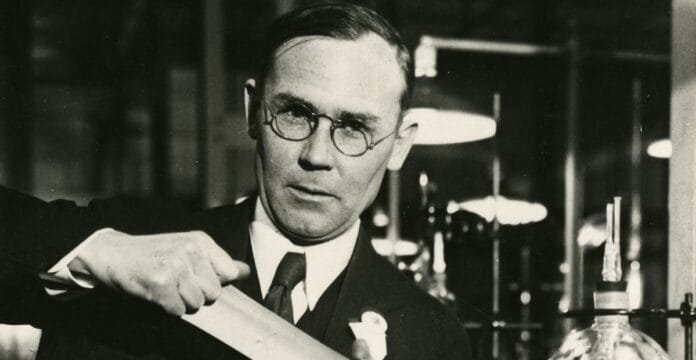Wallace Carothers may not be a household name, but his work changed the world. As the brilliant mind behind nylon, he helped create a new era of synthetic fibers. His research also laid the groundwork for future innovations like polyester, making him one of the most influential chemists in modern history.
In this article, we’ll explore the life, discoveries, and lasting legacy of Wallace Carothers.
Early Life and Education
Wallace Hume Carothers was born on April 27, 1896, in Burlington, Iowa, USA. He showed an early interest in science, especially chemistry. After high school, he studied chemistry at Tarkio College and later earned a Ph.D. from the University of Illinois in organic chemistry.
His academic excellence caught the attention of major industrial labs, eventually leading him to a groundbreaking role at DuPont.
Career at DuPont
In 1928, Carothers joined DuPont, one of the world’s largest chemical companies. There, he was tasked with one mission: create new materials through polymer chemistry.
At DuPont’s research lab, Carothers began working on polymers, which are long chains of repeating molecules. These chains are the building blocks of synthetic materials like rubber and plastic.
The Invention of Nylon
In 1935, after years of research, Carothers made a historic breakthrough: nylon 6,6. It was the world’s first fully synthetic fiber, made by combining hexamethylenediamine and adipic acid.
Why Was Nylon So Important?
- It was strong, stretchable, and resistant to wear.
- It could replace silk, which was expensive and in short supply.
- It became widely used in toothbrushes, stockings, parachutes, ropes, and military equipment.
Nylon’s invention marked a new era in textiles. It was the first time a man-made material could outperform natural fibers.
Connection to Polyester
While Wallace Carothers didn’t invent polyester, his research paved the way.
He developed many of the polymerization techniques later used by British chemists John Whinfield and James Dickson, who invented polyethylene terephthalate (PET) in 1941. PET became the foundation of modern polyester fabric.
In this way, Carothers’ work didn’t just give us nylon—it also helped launch the entire synthetic textile industry.
Personal Struggles and Tragic End
Despite his professional success, Carothers struggled with depression for much of his life. He was a perfectionist and often doubted the value of his work.
Sadly, on April 29, 1937, just two years after inventing nylon, Wallace Carothers took his own life at age 41. His death shocked the scientific community and DuPont.
Legacy and Impact
Though his life was short, Carothers left a huge mark on the world. Today, his legacy includes:
1. Invention of Nylon
Nylon is still widely used in clothing, carpets, seat belts, ropes, tents, and more.
2. Inspiration for Future Fibers
His work in polymer science directly inspired the creation of polyester, spandex, and other synthetic fabrics.
3. A Pioneer of Polymer Chemistry
He is remembered as one of the founders of polymer science, a field that has changed how we live, dress, and manufacture products.
4. Recognition and Honor
- DuPont named research facilities after him.
- His name appears in chemistry textbooks around the world.
- Scientists and textile engineers still credit him for revolutionizing modern materials.
Fun Facts About Wallace Carothers
- He invented neoprene rubber, a material still used in wetsuits and automotive parts.
- He loved pure research and wasn’t interested in fame or profit.
- Though nylon made billions for DuPont, Carothers remained focused on the science behind the discovery.
Conclusion
Wallace Carothers was a genius whose work forever changed the way we dress, travel, and manufacture products. His invention of nylon was just the beginning. His research in polymer chemistry sparked a chain reaction of discoveries—including polyester, which dominates today’s textile market.
Even though his life ended tragically, his scientific legacy lives on in every strand of nylon rope and every thread of polyester fabric.
His story is a reminder that one mind can shape the future—and that science, even in silence, can touch billions of lives.
FAQS
Who was Wallace Carothers?
Wallace Carothers was an American chemist who invented nylon, the first fully synthetic fiber, while working at DuPont in the 1930s.
What is he best known for?
He is best known for inventing nylon 6,6 and pioneering the science of polymer chemistry.
Did Wallace Carothers invent polyester?
No, but his research laid the foundation for polyester. His polymer techniques inspired later scientists to develop PET, the base for modern polyester fabric.



